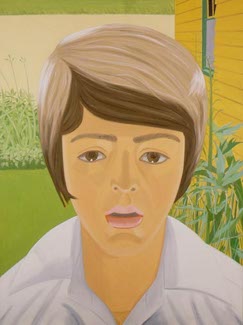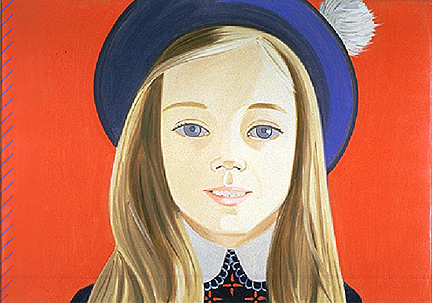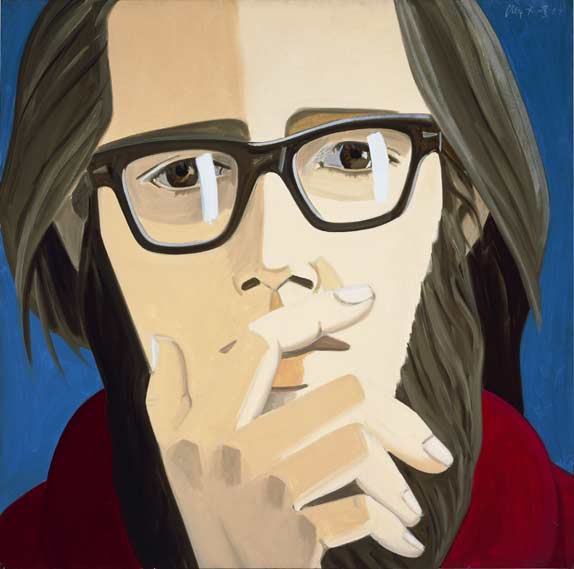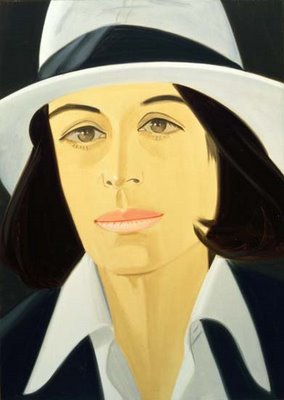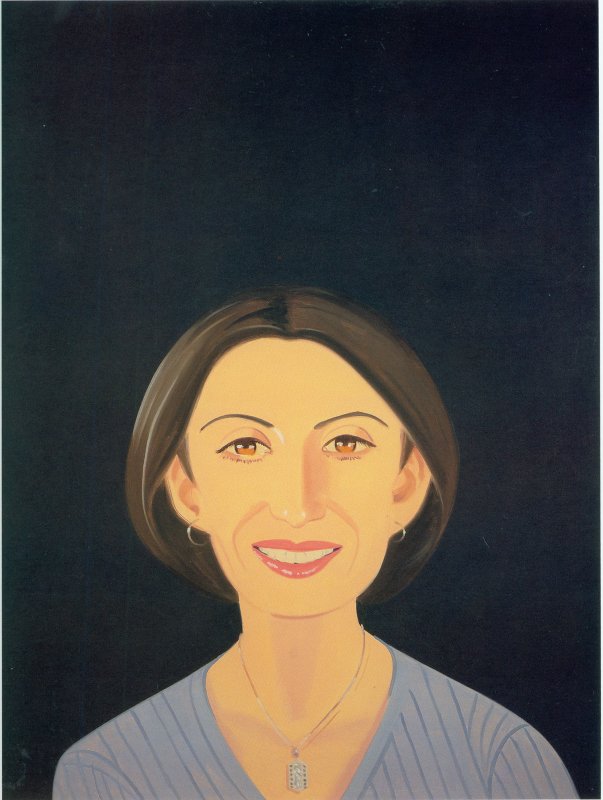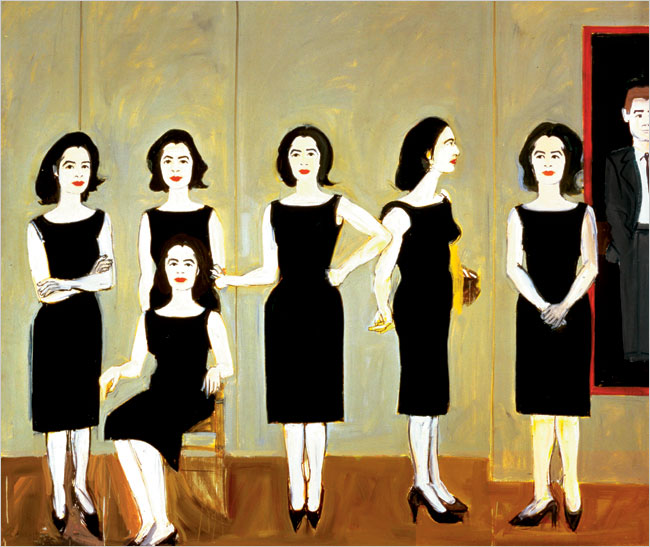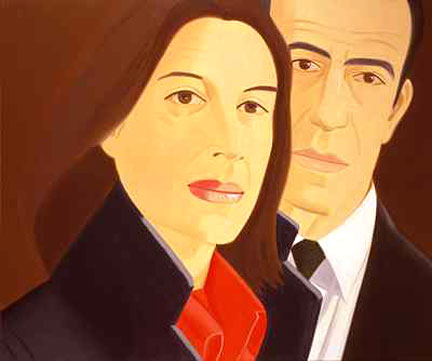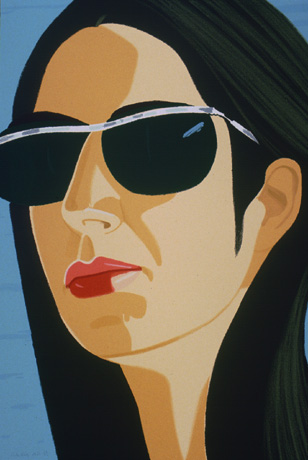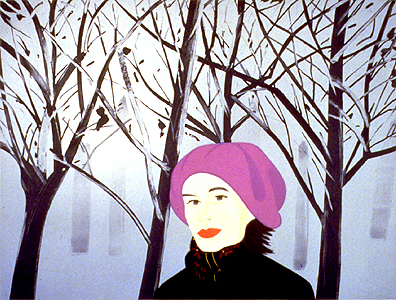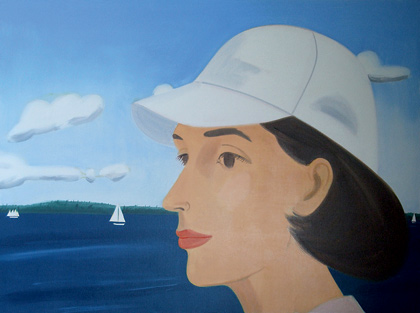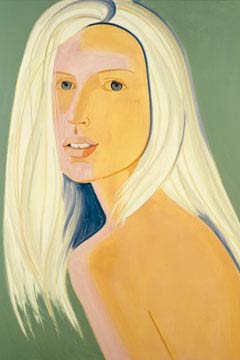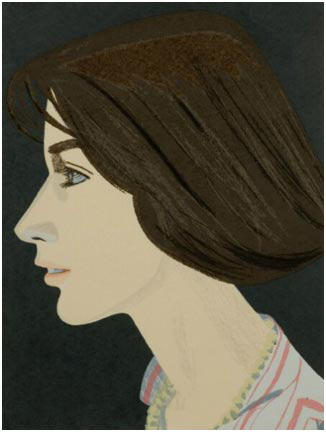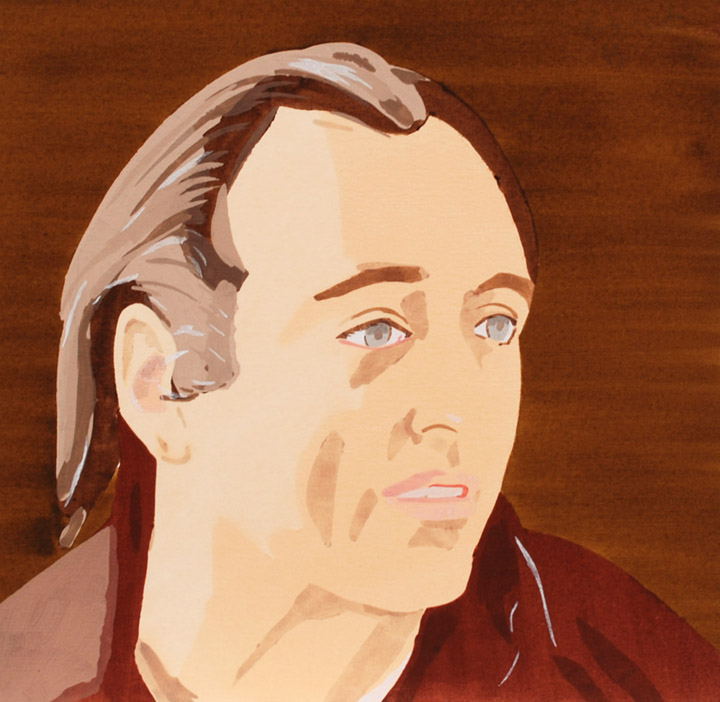<Back to Index>
- Painter Lester Johnson, 1919
- Painter Alex Katz, 1927
PAGE SPONSOR
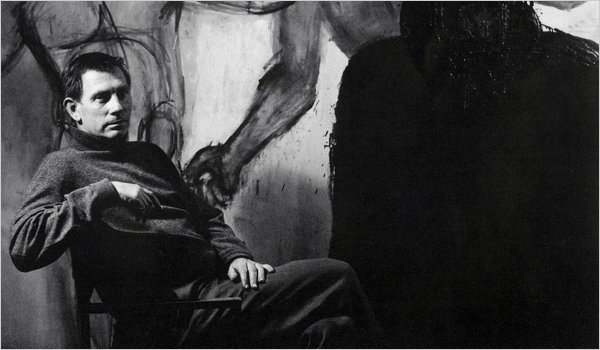
Lester Johnson (January 27, 1919 – May 30, 2010) was an American artist.
As a figurative expressionist and member of the Second Generation of the New York School, painter Lester Johnson remained dedicated to the human figure as means of expression through the many stylistic changes of his oeuvre.
In New York, Johnson exhibited at the Martha Jackson Gallery, Zabriskie Gallery, Gimpel & Weitzenhoffer, and James Goodman Gallery as well as having been included in group shows at the Guggenheim, The Whitney, Museum of Modern Art, and Metropolitan Museum of Art. He was elected a member to both the American Academy of Arts & Letters and National Academy of Design. His work was most recently shown in both the 2010 Armory Show and 2010 Art Chicago.
Johnson lived and worked in New York City (on the
Bowery), Springs, Milford (CT), Greenwich (CT) and
Southampton, NY.
- 1919 Born in Minneapolis, Minnesota
- 1942 – 47 Studied at the Minneapolis School of Art, St. Paul Art School, The School of the Art Institute of Chicago
- 1947 Came to New York
- 1961 – 62 Artist - in - residence, Ohio State University, Columbus, Ohio
- 1964 Summer artist - in - residence, University of Wisconsin – Milwaukee, Milwaukee, Wisconsin
- 1964 – 89 Professor (Adjunct) of Painting, Yale University, New Haven, Connecticut
- 1969 – 74 Director of Studies, Graduate Painting, School of Art and Architecture, Yale University, New Haven, Connecticut
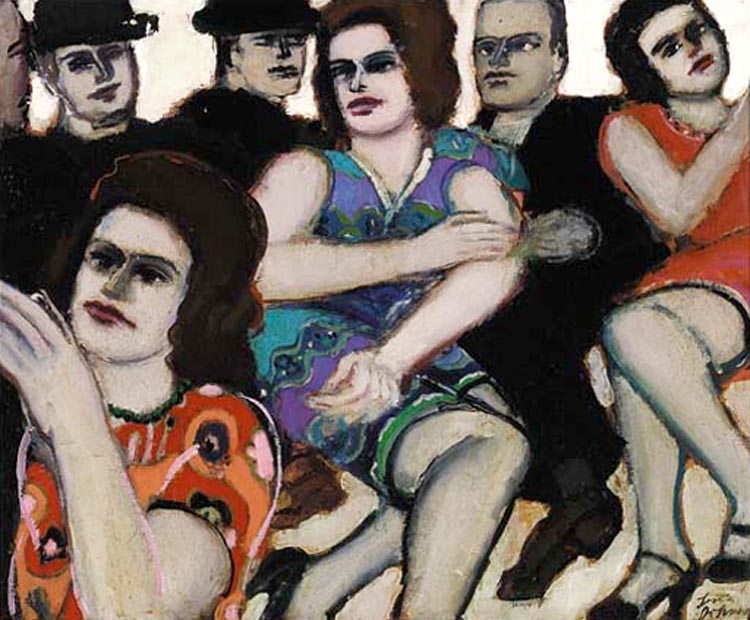
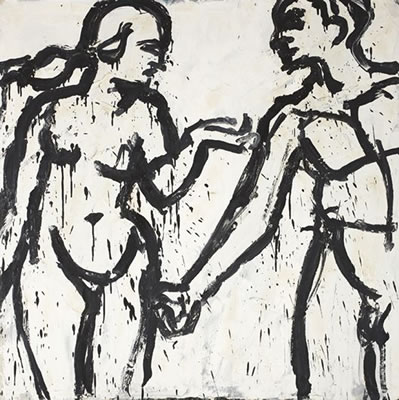
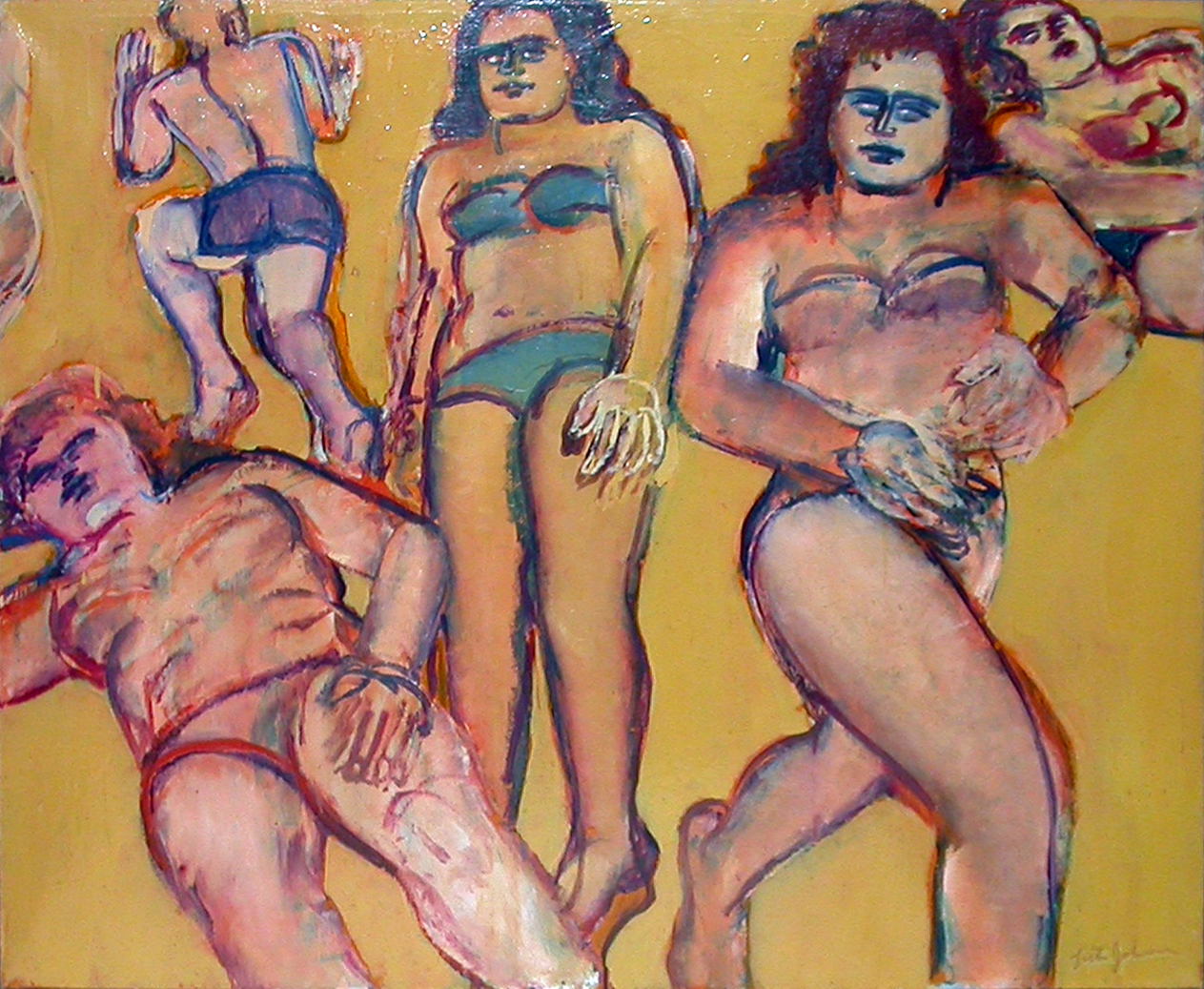
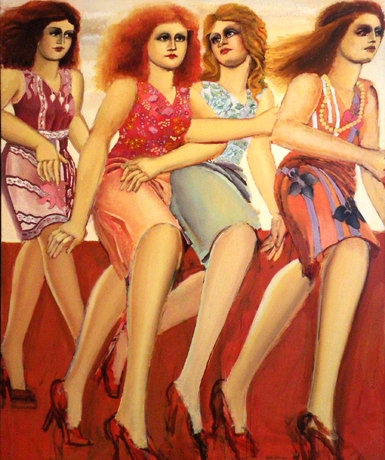
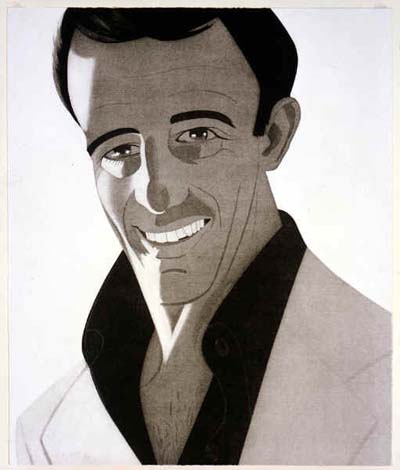
Alex Katz (born July 24, 1927) is an American figurative artist associated with the Pop art movement. In particular, he was known for his paintings, sculptures and prints and is represented by numerous galleries internationally.
Alex Katz was born to a Jewish family in Brooklyn, New York, as the son of an émigré who had lost a factory he owned in Russia to the Soviet revolution. In 1928 the family moved to St. Albans, Queens. From 1946 to 1949 he studied at The Cooper Union in New York, and from 1949 to 1950 he studied at the Skowhegan School of Painting and Sculpture in Skowhegan, Maine. Skowhegan exposed him to painting from life, which would prove pivotal in his development as a painter and remained a staple of his practice. Katz explained that Skowhegan’s plein air painting gave him “a reason to devote my life to painting.” Every year from early June to mid September, Katz moved from his SoHo loft to a 19th century clapboard farmhouse in Lincolnville, Maine. A summer resident of Lincolnville since 1954, he developed a close relationship with local Colby College. From 1954 to 1960, he made a number of small collages of still lifes, Main landscapes and small figures. He met Ada Del Moro, who had studied biology at New York University, at a gallery opening in 1957. In 1960, Katz had his first (and only) son, Vincent Katz.
Katz has admitted to destroying a thousand paintings
during his first ten years as a painter in order to find
his style. Since the 1950s, he worked to create art more
freely in the sense that he tried to paint “faster than
[he] can think.”
His works seem simple, but according to Katz they are more
reductive, which was fitting to his personality.
Katz is well known for his large paintings, whose bold simplicity and heightened colors are now seen as precursors to Pop Art. His paintings are defined by their flatness of color and form, their economy of line, and their cool but seductive emotional detachment. A key source of inspiration are the woodcuts produced by Japanese artist Kitagawa Utamaro.
Beginning in the late 1950s, he developed a technique of
painting on cut panels, first of wood, then aluminum,
calling them "cutouts". These works would occupy space
like sculptures, but their physicality is compressed into
planes, as with paintings. Katz achieved
great public prominence in the 1980s.
Katz's paintings are divided almost equally into the genres of portraiture and landscape. Since the 1960s he has painted views of New York (especially his immediate surroundings in Soho), the landscapes of Maine, where he spent several months every year, as well as portraits of family members, artists, writers and New York society protagonists.
In the early 1960s, influenced by films, television and billboard advertising, Katz began painting large scale paintings, often with dramatically cropped faces. Ada Katz, whom he married in 1958, has been the subject of numerous portraits throughout his career. To make one of his large works, Katz painted a small oil sketch of a subject on a masonite board; the sitting might take an hour and a half. He then made a small, detailed drawing in pencil or charcoal, with the subject returning, perhaps, for the artist to make corrections. Katz next blew up the drawing into a "cartoon," sometimes using an overhead projector, and transferred it to an enormous canvas via "pouncing" — a technique used by Renaissance artists, involving powdered pigment pushed through tiny perforations pricked into the cartoon to recreate the composition on the surface to be painted. Katz pre-mixed all his colors and get his brushes ready. Then he dived in and painted the canvas — 12 feet wide by 7 feet high or even larger — in a session of six or seven hours.
After 1964, Katz increasingly portrayed groups of figures. He would continue painting these complex groups into the 1970s, portraying the social world of painters, poets, critics and other colleagues that surrounded him. He began designing sets and costumes for choreographer Paul Taylor in the early 1960s, and he painted many images of dancers throughout the years. One Flight Up (1968) consists of more than 30 portraits of some of the leading lights of New York’s intelligentsia during the late 1960s, such as the poet John Ashbery, the art critic Irving Sandler and the curator Henry Geldzahler, who championed Andy Warhol. Each portrait is painted using oils on both sides of a sliver of aluminium that has then been cut into the shape of the subject’s head and shoulders. The silhouettes are arranged predominantly in four long rows on a plain metal table.
After his Whitney exhibition in 1974, Katz focused on landscapes stating "I wanted to make an environmental landscape, where you were IN it." In the late 1980s, Katz took on a new subject in his work: fashion models in designer clothing, including Kate Moss and Christy Turlington. "I've always been interested in fashion because it's ephemeral," he said.
In 1965, Katz also embarked on a prolific career in printmaking. Katz would go on to produce many editions in lithography, etching, silkscreen, woodcut and linoleum cut, producing over 400 print editions in his lifetime. The Albertina, Vienna, and the Museum of Fine Arts, Boston, hold complete collections of Katz print oeuvre. A print catalogue raisonné was due for release by the Albertina in the fall of 2011.
In 1977, Alex Katz was asked to create a work to be
produced in billboard format above Times Square, New York
City. The work, which was located at 42nd Street and 7th
Avenue, consisted of a frieze composed of 23 portrait
heads of women. Each portrait measured twenty feet high,
and was based on a study Katz did from life. The billboard
extended 247 feet long along two sides of the RKO General
building and wrapped in thee tiers above on a 60 foot
tower. Katz was commissioned in 1980 by the US General
Service Administration's Art in Architecture Program to
create an oil on canvas mural in the new United States
Attorney’s Building at Foley Square, New York City. The
mural, located inside the Silvio V. Mollo Building at
Cardinal Hayes Place & Park Row, is 20 feet high by 20
feet wide.
In 2005, Katz participated in a public art project Paint
in the City commissioned by United Technologies
Corporation and organized by Creative Time. The work,
titled Give Me Tomorrow, reached 28 feet tall and 53 feet
long on a billboard space above the Bowery Bar. Located on
the corner of the Bowery and East Fourth Street in the
East Village, the work was hand painted by sign painters
and was installed during the summer of 2005.
Katz has collaborated with poets and writers since the 1960s, producing several notable editions such as "Face of the Poet" combining his images with poetry from his circle, such as Ted Berrigan, Ann Lauterbach, Carter Ratcliff, and Gerard Malanga. He has worked with the poet John Ashbery, creating publications entitled "Fragment" in 1966 and "Coma Berenices" in 2005. He has worked with Vincent Katz on "A Tremor in the Morning" and "Swimming Home". Katz also made 25 etchings for the Arion Press edition of Gloria with 28 poems by Bill Berkson. Other collaborators include Robert Creely, with whom he produced "Edges" and "Legeia: A Libretto" and Kenneth Koch, producing "Interlocking Lives". In 1962, Harper’s Bazaar incorporated numerous wooden cutouts by Katz for a four page summer fashion spread.
Numerous publications outline Katz's career's many
facets: from Alex Katz in Maine
published by the Farnsworth Art Museum to the catalogue Alex
Katz New York, published by the
Irish Museum of Modern Art. Alex Katz Seeing Drawing,
Making, published in 2008, describes Katz's multiple
stage process of first producing charcoal drawings, small
oil studies, and large cartoons for placing the image on
the canvas and the final painting of the canvas. Phaidon
Press (2005) published an illustrated survey, Alex
Katz by Carter Ratcliff, Robert Storr and Iwona
Blazwick. In 1989, a special edition of Parkett was
devoted to Katz, showing that he is now considered a major
reference for younger painters and artists.
Over the years, Francesco Clemente, Enzo Cucchi, Liam
Gillick, Peter Halley, David Salle and Richard Prince have
written essays about his work or conducted interviews with
him.
Katz' first one person show was an exhibition of paintings at the Roko Gallery in New York in 1954. In 1974 the Whitney Museum of American Art showed Alex Katz Prints, followed by a traveling retrospective exhibition of paintings and cutouts titled Alex Katz in 1986. The subject of over 200 solo exhibitions and nearly 500 group shows internationally, Katz has since been honored with numerous retrospectives at museums including the Whitney Museum of American Art, New York; Brooklyn Museum, New York; the Jewish Museum, New York; the Irish Museum of Modern Art, Dublin; Colby College Museum of Art, Maine; Staaliche Kunsthalle, Baden - Baden; Fondazione Bevilacqua La Masa, Venice, Centro de Arte Contemporáneo de Málaga and the Saatchi Gallery, London (1998). In 1998, a survey of Katz' landscape paintings was shown at the P.S. 1 Contemporary Art Center, featuring nearly 40 pared down paintings of urban or pastoral motifs.
Katz is represented by Gavin Brown's enterprise in New York, Timothy Taylor Gallery in London, and Galerie Thaddaeus Ropac in Paris / Salzburg. Before showing with Brown, he had been represented by Pace Gallery for 10 years and by Marlborough Gallery for 30 years.
Katz's
work is in the collections of over 100 public institutions
worldwide, including the Honolulu Museum of Art, the
Museum of Modern Art, New York, the Metropolitan Museum of
Art, NY; Whitney Museum of American Art, NY; the
Smithsonian Institution, Washington, D.C.; Carnegie Museum
of Art; the Art Institute of Chicago; Cleveland Museum of
Art; the Tate Gallery,
London; the Centre Georges Pompidou, Paris; Museo Nacional Centro de Arte Reina
Sofia, Madrid; Metropolitan Museum of Art, Tokyo;
the Nationalgalerie, Berlin; and
the Museum Brandhorst, Munich. In 2010, Anthony d'Offay
donated a group of works by Katz to the National Galleries
of Scotland and Tate. In 2011, Katz
donated Rush (1971), a series of 37 painted life
size cutout heads on aluminum, to the Museum of Fine Arts,
Boston; the piece s installed frieze - like in its own
space.
Throughout his career, Katz has been the recipient of numerous awards, including The John Simon Guggenheim Memorial Fellowship for Painting in 1972, and in 1987, both Pratt Institute’s Mary Buckley Award for Achievement and The Queens Museum of Art Award for Lifetime Achievement. The Chicago Bar Association honored Katz with the Award for Art in Public Places in 1985. In 1978, Katz received the U.S. Government grant to participate in an educational and cultural exchange with the USSR. Katz was awarded the John Simon Guggenheim Fellowship for Painting in 1972. Katz was inducted by the American Academy of Arts and Letters in 1988, and recognized with honorary doctorates by Colby College, Maine (1984) and Colgate University, Hamilton, New York, (2005). He was named the Philip Morris Distinguished Artist at the American Academy in Berlin in 2001 and received the Cooper Union Annual Artist of the City Award in 2000. In addition to this honor, in 1994 Cooper Union Art School created the Alex Katz Visiting Chair in Painting with an endowment provided by the sale of ten paintings donated by the artist. In 2005, Katz was the honored artist at the Chicago Humanities Festival’s Inaugural Richard Gray Annual Visual Arts Series. In 2007, he was honored with a Lifetime Achievement Award from the National Academy of Design, New York.
In October 1996, the Colby College Museum of Art opened a 10,000 square foot wing dedicated to Katz that features more than 400 oil paintings, collages and prints donated by the artist. In addition, he has purchased numerous pieces for the museum by artists such as Jennifer Bartlett, Chuck Close, Francesco Clemente, Elizabeth Murray. In 2004, he curated a show at Colby of younger painters Elizabeth Peyton, Peter Doig and Merlin James, who work in the same figurative territory staked out by Katz.
In 1996, Vincent Katz and Vivien Bittencourt produced a video titled Alex Katz: Five Hours, documenting the production of his painting January 3 and in 2008 he was the subject of a documentary directed by Heinz Peter Schwerfel, entitled What About Style? Alex Katz: a Painter's Painter.
Katz' work is said to have influenced many
following painters, such as David Salle, Peter Halley and
Richard Prince,
as well as younger artists like Brian
Calvin, Peter Doig, Julian Opie, Liam Gillick,
Elizabeth Peyton and Johan Andersson.
